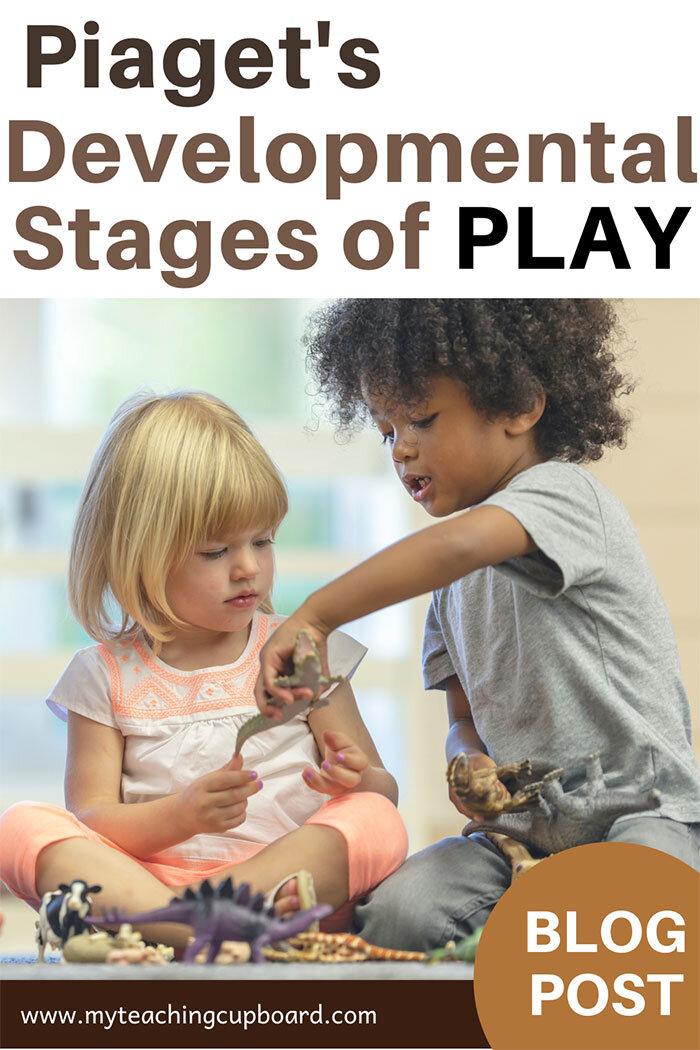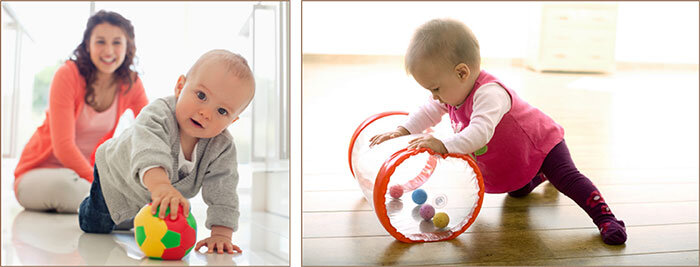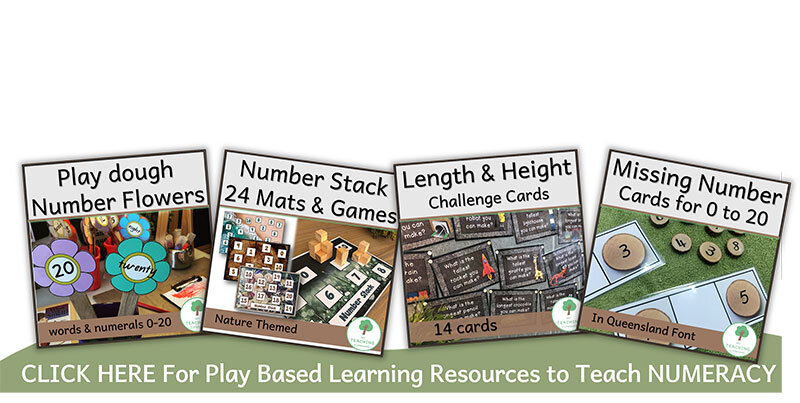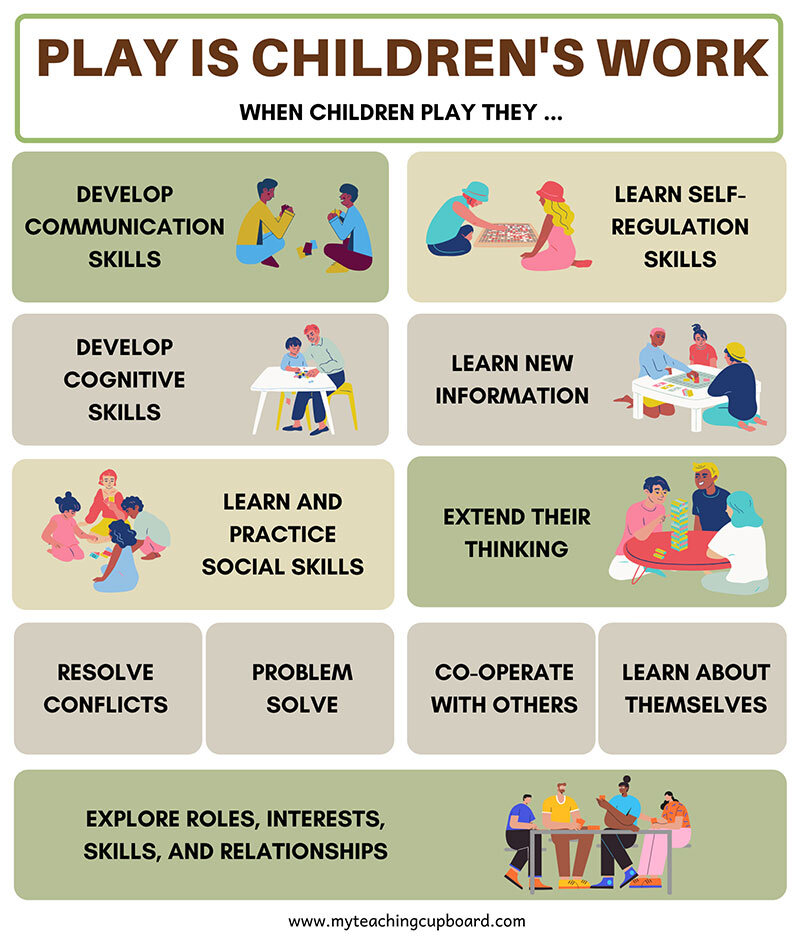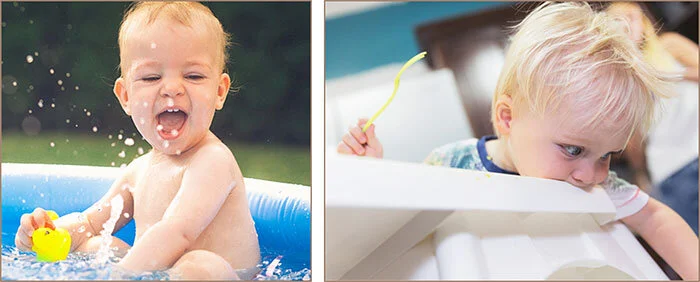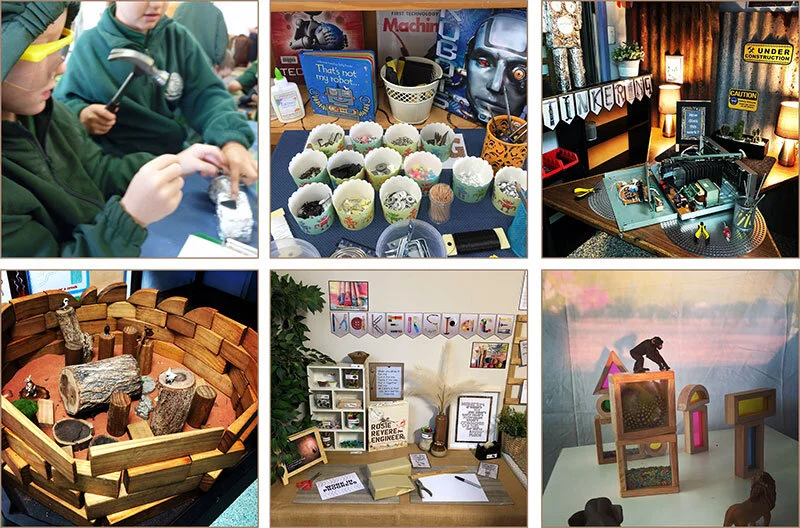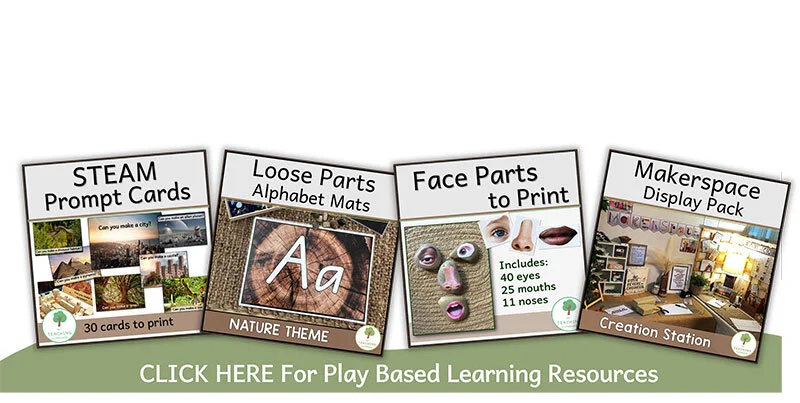Developmental Stages of Play - Piaget
Jean Piaget was a Swiss psychologist in the early 1900s. He created theories of cognitive development based on his observational studies of children. The theories of Piaget reinforce the idea that children learn through play.
In this blog post you will discover Piaget’s four stages of cognitive development and how these relate to his developmental stages of play.
Piaget devised a series of developmental stages of play. We can observe them throughout his four stages of cognitive development.
Piaget’s Four Stages of Cognitive Development
Piaget's theory of cognitive development proposes 4 stages.
Sensorimotor stage: birth to 2 years
Preoperational stage: ages 2 to 7
Concrete operational stage: ages 7 to 11
Formal operational stage: ages 12 and up
If you would like to learn more about Jean Piaget and his theories on cognitive development in children, check out THIS BLOG POST: Stages of Development–Piaget
“According to Piaget, children engage in types of play that reflect their level of cognitive development: functional play, constructive play, symbolic/fantasy play, and games with rules.”
Sensorimotor Stage
The name of the first stage (sensorimotor) gives you a clue about how children learn in those first two years of life. Right from birth, babies use their senses to learn about their world.
Exploratory play through the five senses is the primary type of play you will see at this stage. Young children in this stage are focused on two things:
their own bodies
external objects.
You will notice babies and toddlers in the sensorimotor stage are focused on repeated patterns of movement or sound. They spend their time sucking, shaking, banging and babbling.
Piaget observed babies from around 6 months onwards organised their knowledge conceptually. At first babies might not understand a specific toy, but as they look, feel, and touch it, they start to form a concept of the toy in their minds. As they learn more about the properties of objects and how they can be manipulated, they begin to understand the effects of play on their environment.
Preoperational Stage
The next stage of cognitive development is the preoperational stage. You will observe children in this stage are learning to associate objects with words and the way they use and represent objects has no real adult logic behind it.
Piaget noticed children in this stage use imaginative play to represent objects, and they build their conceptual knowledge through pretending and dramatic play.
At around 4 years of age, they become more interested in social interactions and start to enjoy structured games with rules. In the preoperational stage, their thinking is still dominated by intuition rather than logic though.
Concrete Operational Stage
As children move through the concrete operational stage, Piaget noticed logical thinking emerges. Hands-on games with rules become extremely effective learning tools to use with children in this stage of development.
Initially, rules provide the structure and repetition sought after by their development of logical thinking. Gradually, the children in the concrete operational stage become more focused on the social aspects of play. They play in order to seek connection and acceptance by the group.
Formal Operational Stage
By the formal operations stage, children are developing the ability to reason and think hypothetically. Abstract concepts such as the future, justice and values are engaging and easily understood by children in the formal operations stage.
The children in this stage of cognitive development desire more competitive games and games with more complex rules. Piaget observed children in this stage also needed less direction from adults, as they are more capable of thinking independently.
Piaget’s Four Developmental Stages of Play
Piaget suggested the stages of cognitive development occur in a particular order. Children will not skip a stage but progressively move through each one. He also believed the stages of play to be progressive, with visible changes in children’s play as they pass through each stage.
According to Piaget, children engage in types of play that reflect their level of cognitive development. Play is children’s work.
Through play
children develop cognitive skills and learn new information
they learn and practice social skills
children develop effective communication skills
they learn self-regulation skills
children develop the ability to resolve conflicts
they work on problem-solving skills
children learn to cooperate with others
they learn about themselves and their place in the world
children explore roles, interests, skills, and relationships
Play is how children explore and learn about their world.
Piaget’s Functional Play
Any repetitive action that the child finds enjoyable is functional play.
Functional play is the first type of play children experience. It begins with babies in the sensorimotor stage of cognitive development. When babies learn to control their bodies and objects, they experience functional play.
Babies play through repetitive actions, like shaking a rattle, splashing in the bath, or repeatedly dropping toys from their highchair. These basic actions become play when the child deliberately engages in the activity for pleasure (Frost, 1992).
As children develop cognitively, their simple, repetitive actions become more and more complex and coordinated. Functional play is not exclusive to the sensorimotor stage of cognitive development.
Children can observe and enjoy functional play throughout their entire childhood. Whenever children discover and practice new motor skills like sliding, climbing, stacking, jumping, and bouncing, they are taking part in functional play.
Piaget’s Constructive Play
When children manipulate objects to create something, they are taking part in constructive play.
Constructive play is often seen in the classroom through hands-on inquiry type pedagogies.
In constructive play, children develop their conceptual knowledge by posing questions, testing ideas, and gathering information. Through their experimentation with learning materials they plan, explore, and discover.
Constructive play allows children to make sense of their world.
In constructive play, children also develop
their imagination
problem-solving skills
fine motor skills
their self-esteem.
As educators, we should encourage this type of play because it lays the foundation for academic, social, and emotional success.
Young children prefer constructive play. When given a choice of play activities, preschool children choose constructive play more than 50% of the time (Rubin, Fein, & Vandenberg 1983).
Piaget saw constructive play as a transition from functional to symbolic play. It allows children to manipulate and control their environment and gives children a sense of accomplishment.
The key to promoting constructive play in your classroom is to provide your children with age appropriate and inspiring learning materials. The children should be able to use these materials in an organised, goal-oriented way so that they can make something new with them.
Constructive Play Investigation Areas
Because constructive play is driven by children’s interactions with their environment (Chaille 2008), designing an appropriate learning environment will take the constructive play in your classroom to a new level.
Try adding new and novel materials like loose parts to your investigation areas to spark interest and invite children to explore the materials in new ways.
Integrate your investigation areas and repurpose the materials you offer the children in your class.
combine the woodwork bench with the art area
add some math manipulatives or loose parts to your literacy area
add the science table to your blocks area
use the veranda or outdoor space by taking indoor materials and resource outside
bring outdoor materials and resources inside the classroom
set up the collage trolley in the playground
add a tray of Lego to a picnic blanket under a tree.
Constructive Play in the Playground
Water play troughs and sandpits are staples in most early childhood playgrounds. They are excellent invitations for children to take part in constructive play.
Other areas you might like to consider adding to your outdoor space are
water tables
woodwork benches
art easels and paints
outdoor mats or tables with baskets of blocks puzzles, Lego and other traditional classroom materials.
A large garden for children to work and play in also encourages a variety of constructive play.
Piaget’s Symbolic/Fantasy Play
Symbolic/Fantasy play is role playing or make-believe play.
Symbolic play is the ability of children to use objects, actions, or ideas to represent other objects, actions, or ideas. Classroom dramatic play areas and small world setups are the perfect learning experience to foster symbolic/fantasy play.
Symbolic/fantasy play is widely considered the most sophisticated play activity during the preschool and kindergarten years. Symbolic play encourages the development of social skills, academic abilities, early literacy concepts, and behavioural self-regulation (Leong & Bodrova 2015).
Symbolic/fantasy play can be seen in children as young as 18 months of age. You may have seen toddlers engaging in pretend play when they use objects to represent something else like driving a car by moving a pretend steering wheel or using a block of wood as a cell phone. Drinking from an empty cup or pretending to feed a doll are also examples of symbolic play.
As children develop through Piaget’s cognitive developmental stages, their play includes fantasy and drama. Preschoolers enjoy role play and often include social norms in their pretend play. As their role-plays and imagination become more sophisticated, socialization becomes an important part of their play.
You will notice these children will start to designate roles to themselves and to others. They will begin to include sequential steps and organised plans in their imaginative play.
Dramatic play is vital to cognitive development and should be a vital component of your classroom. It provides the opportunity for children to explore various roles and social rules that they may not otherwise have the chance to explore in the real world.
Dramatic play helps children to move away from their egocentric thinking. Through symbolic or fantasy play, children will learn skills in negotiation, cooperation, listening, sharing, taking turns, and respecting others’ feelings, thoughts, ideas, and physical space.
Symbolic play is also a prerequisite to literacy and numeracy. When we write letters and numbers, we are using symbols for what we want to convey. When children are engaged in symbolic play, they are practicing these very concepts.
Researchers have found that a child who follows a sequence when playing (stirring milk and then feeding the doll) will also be able to manage syntax in language (“I need paper and crayons”).
Children will also be developing their cognitive skills when they use their imagination and take part in symbolic or fantasy play. New neural pathways are created whenever a child learns how to think creatively.
The development of creative thinking skills help children to become effective problem solvers. Creative thinking skills are also vital for bringing new perspectives into our world.
Piaget’s Games With Rules Play
Any play which has imposed rules to be followed by the players is games with rules play.
This is the last type of play documented by Piaget. To successfully take part in this type of play, children must first have the cognitive ability to understand and remember the rules.
These games will also require children to self-regulate. They will need to control their own desires and needs in order to follow the rules of the game.
Children are usually first introduced to games with rules at school. Games like Tiggy, Cat and Mouse or Duck-Duck-Goose are always classroom favourites. These class games are often a child’s first introduction to games with rules play.
Board games and card games are other types of games with rules. Through these games, children develop an understanding of cooperation and competition.
Games with rules are often characterised by logic and order, and as children mature, they can develop method and planning in their game playing (Frost 2004).
“By initiating their own games with rules, children learn the need for rules, how to negotiate with each other, and fairness so that the game is enjoyable for everyone. Team sports and board games are games that have very specific rules and encourage the development of strategy. Electronic games are designed to target children at different stages of development and often encourage the practice and mastery of new skills through challenging tasks and fantasy.”
Piaget's theories about learning strongly suggest we should focus on creating engaging learning environments which provide opportunities for children to experiment and interact with the world around them.
Educators need to provide interactive, hands-on learning experiences so children can progress through Piaget’s stages of cognitive development and meet their cognitive developmental milestones. For children to construct new knowledge and mental models of understanding, we must carefully plan and provide purposeful play experiences for our students.
Play experiences which encompass
Functional Play
Constructive Play
Symbolic/Fantasy Play
Games With Rules Play
You will find many resources HERE to help you create engaging learning environments and provide interactive, hands-on learning experiences.
If you like this blog post on Piaget’s developmental stages of play, please consider sharing it...
Just CLICK the sharing box below.👇

